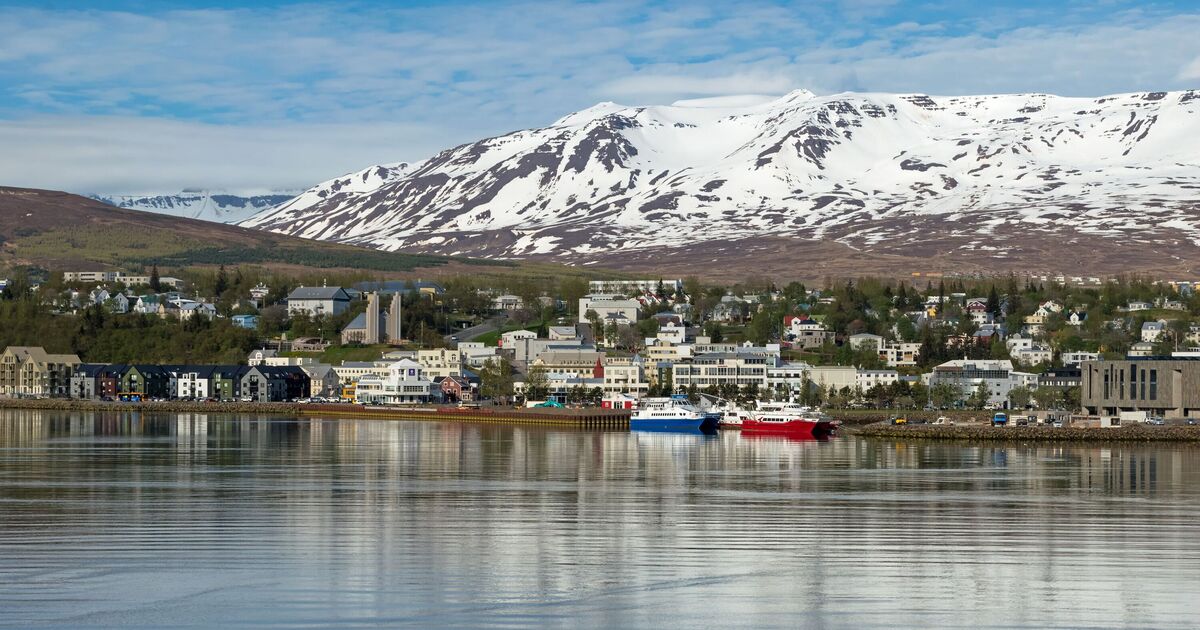As multiple heatwaves and record-breaking temperatures hit the UK, more Brits might be looking to go somewhere cooler this summer. Holiday booking platform Book Retreats said travel to cool-weather destinations hs surged 80% year-on-year globally.
Among UK travellers, interest in popular so-called “coolcation” spots like Iceland skyrocketed 650% over the summer of 2024, and in June this year, demand spiked 2,400% compared to May 2025. “Last year was Europe’s hottest on record, and now the UK is seeing its own extreme heat arrive earlier and more intensely than ever,” says Sean Kelly, co-founder of Book Retreats. “Looking at the booking trends, it’s really no surprise we’re seeing a surge in travellers wanting to escape the heat this summer, not chase it.” As the search for these types of places reaches record highs, the booking platform has revealed the top coolcation destination, offering fewer tourists and average daytime highs below 24C.
According to the travel experts, Akureyri in northern Iceland is this summer’s most promising coolcation escape. Just 62 miles south of the Arctic Circle, the town offers a quieter, cooler alternative to Reykjavík, with average highs of just 13C in July.
Set along Eyjafjörður, Iceland’s longest fjord, the town is also a hub for wildlife. Between June and August, visitors can spot puffin colonies (home to over half the world’s Atlantic population) and humpback whales along the northern coast.
Sean said: “Bookings to Iceland in summer 2024 were up 20% globally compared to the rest of the year, and it reflects what people want from a holiday: cooler weather, wide open landscapes, and the kind of quiet you don’t have to travel to the ends of the earth for.”
Book Retreats also highlighted the Azores, a volcanic archipelago in the North Atlantic, as a fast-growing alternative to Portugal’s scorching mainland. With average July highs around 24C and far fewer tourists, the islands offer a subtropical climate without the heat.
São Miguel is home to crater lakes, geothermal springs, and tea plantations, while nearby Pico Island features UNESCO-listed vineyards and conservation-led whale watching.
In 2023, the Azores islands were named a Whale Heritage Site and now protect 30% of surrounding waters – the largest marine reserve in the North Atlantic.
Further inland, Slovenia’s Julian Alps are emerging as a cooler, less crowded alternative to southern Europe’s coastline. Most of the region falls within Triglav National Park, where limestone peaks and alpine lakes provide respite from the heat.
With average summer highs of 24C and fewer visitors, the area appeals to hikers, swimmers, and those after a slower pace. BookRetreats.com notes Lake Bohinj in particular as a peaceful alternative to the busier Lake Bled.
Also featured on the list of coolcation destinations are Newfoundland in Canada, Galway on Ireland’s west coast, and the Italian Dolomites, all of which maintain average summer highs below 24C.
“For a long time, summer travel was about chasing the sun,” says Sean. “But with record temperatures and overcrowding now the norm in popular hotspots, travellers are rethinking what makes a great holiday, and coolcations offer something different. They are places where you can breathe easier, move at your own pace, and enjoy the outdoors without the extremes.”

